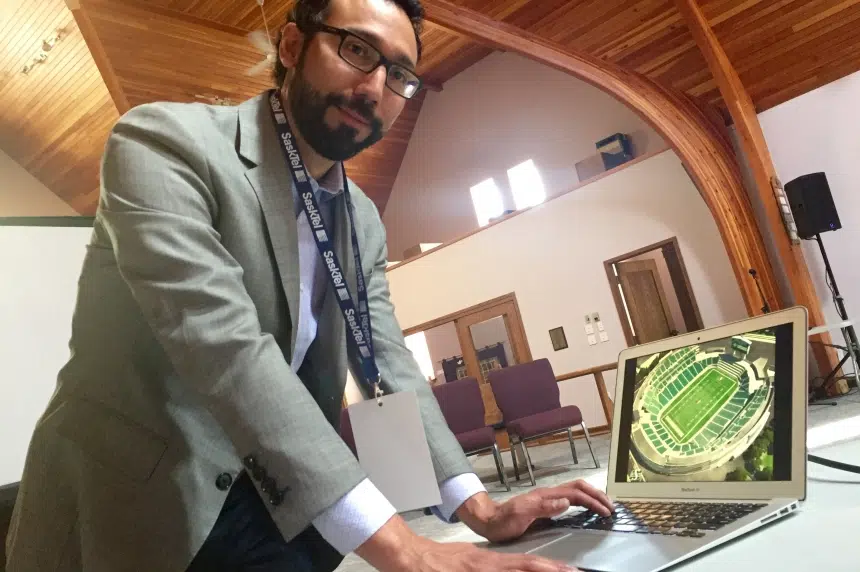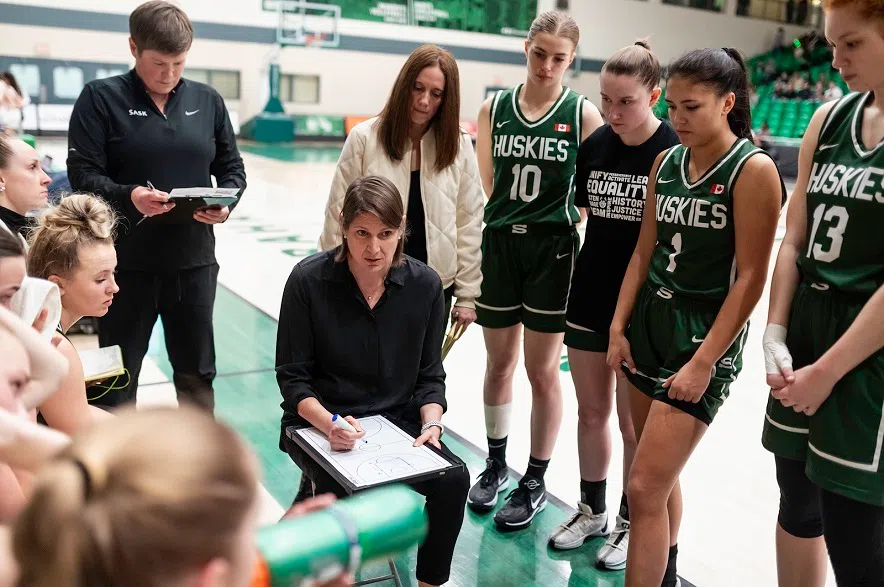As the new Mosaic Stadium physically takes shape in Regina, its technological framework is coming together with exciting possibilities.
One that will be handy for every fan stepping foot inside: a “way finding” feature for mobile devices that acts as an interactive map – detailing bathrooms, concessions and possibly even estimated line-up times for both – at the new venue.
“It’s a brand new stadium, there’s going to be confusion,” said Ricardo del Cid, manager of information technology for the Saskatchewan Roughriders.
“Our goal is to have a seamless experience.”
Del Cid held an informative session Saturday morning at Emmanuel Anglican Church in Saskatoon on the technology evolution for the new Mosaic Stadium. It was part of the 2016 MoSo Festival programming offered free for the first time to the public.
In front of a small audience, he outlined ideas and challenges facing the team as they build a game-changing stadium at a time when technology – and its implications – continue to shift.
“What we’re trying to do is make sure that the experience is even better than at home,” del Cid said while going through slides of what new tech will – and might – be on the way.
Building upon the current Saskatchewan Roughrider app capabilities, Del Cid said the team is looking at ways to cut down line-up times through in-seat, mobile concession ordering, and possibly in-seat delivery one day.
Or how about knowing which bathroom has the shorter queue? Del Cid said as the new tech begins to amass information data about the stadium, the ways fan experience can be enhanced will expand.
What is known for sure: technology will be embedded in every facet of the new facility.
It’ll be the first stadium in Canada will full LED lighting, and the massive HD score screen will be one of the largest in the country.
Video will be one of the biggest game-changers, with more than 500 screens set to be installed throughout the venue.
“You’re not going to miss a minute of the action,” del Cid said.
Mobile devices will also interact with game-day video; del Cid said the hope is for fans to access footage such as live-action replays in seat, in hand.
And it likely won’t lag either: a state-of-the-art data network set-up by SaskTel will allow enough capacity for half the people inside the stadium to stream HD video simultaneously.
Del Cid said this was one of the challenges for the new venue – with 33,000 seats, Mosaic has to meet the mobile usage demands of an entire city the size of Moose Jaw, which has a population of around 33,600 people.
In order to do this, SaskTel is mounting 300 antennas in the new facility, up 299 from the one antenna currently servicing the old stadium.
“They’re essentially deploying these 300 antennas to make sure every seat has the ability to be connected, as opposed to fighting for a small piece of the pie,” del Cid said, adding the change will lead to less dropped calls and faster service.
WiFi will be available; however, SaskTel has yet to confirm if it’ll be open for everyone, and not just customers.
When asked about charging stations, del Cid said the stadium isn’t just for use by the Roughriders, and those discussions will need to take place with other partners as well.
While the possibilities for using tech in the new venue are endless, del Cid stressed they will only be looking at ways that will help enhance the experience for Saskatchewan fans.
“Always looking for what fits our demographic,” he said. “If we go out too soon (with the technology), it may be a waste of resources.”
He said education and awareness of what’s available will be key as not all ideas will be adopted, and the ones that are will likely not be rolled out at the same time. The team said it’s looking into the possibility of on-site tech ambassadors to assist fans.
More specifics on the stadium size and features is set to be released in the coming weeks by the City of Regina and SaskTel.







